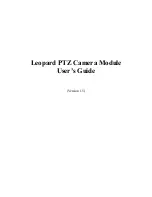
49
IX.
Great underwater pictures made easy
Please visit the SeaLife website for updates and how-to tutorials
Any updates to the manual or additional tips and advice can be found on
the SeaLife website at www.sealife-cameras.com.
Clear water visibility
Clear water is essential for good results. Tiny particles floating in the
water cause low visibility and poor image quality. Avoid stirring up the sea
floor with your fins. Limit your shooting distance to 1/10 of the water
visibility. For example, if the visibility is 40ft (12m), you should keep your
shooting distance to within 4 feet (1.2m).
Keep close shooting distance
The ideal shooting distance is within 6ft (1.8m), and the closer the better.
The camera’s minimum focus range is 12” (30cm). Use the optional
Super Macro Lens (SL571) for closer underwater focus distance of 3.5” to
7” (9cm to 18cm), or the Close-up Lens (SL572) for closer underwater
focus distance of 6” to 24” (15 to 60cm).
Move calmly and control your buoyancy
It is very hard to take good photos or videos when you are moving or
buoyancy is not controlled. Position yourself at the best angle and
neutralize your buoyancy. Then, frame your subject, check your shooting
distance and keep the camera steady. Don’t chase the fish, let the fish
come to you. Sometimes you have to wait a little bit for the fish return.
Always observe safe
‑
diving rules.
Take several photos and shoot upwards
Shoot at least 3 photos of each subject. You can always delete the bad
shots later. Try different shooting angles and shooting distances. Shoot
upwards to capture some blue water in the background. Shooting
downwards tends to result in poor composition and contrast.







































